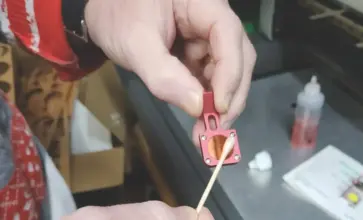Tips
What should a laser user keep in mind to create high-quality engraving projects?
- Make sure to use high-quality artwork when building your engraving design layout. Ideally, raster-based artwork should be able to be scaled up to 150-200% with minimal quality loss. Do not settle for an image downloaded from a Google image search. Vector-based artwork should have clean lines and fill colors without artifacts and clutter scattered around the layout.
- To create a more dynamic range of engraved tones, consider using various values of RGB grays as fill colors within your vector-based artwork. If your laser software is equipped with a variety of dithering options, consider utilizing them to create more dynamic details and tones within your raster engravings.
- Use the best lens for the job. Many lasers come with 2″ lenses, which are good all-around focal length lenses for many types of engraving and cutting work. However, higher and/or lower focal length lenses can be more effective for specific tasks. For instance, higher focal length lenses, such as 3″ lenses, excel at vector cutting tasks especially when cutting thicker material. However, 3″ lenses can sometimes lack the ability to engrave extremely small details. 1.5″ lenses can produce small, crisp, attention-grabbing details for photographs and fine-detail engraving.
- Try varying your settings to create a range of deeper and more shallow depths within one engraving job where it makes sense to do so. This can help create more dynamic contrast and even a perceived 3-D effect on some products and materials.
- Consider trying a photo-optimizing software program such as PhotoGrav to optimize your raster-based images for laser engraving.
– George Privateer, Johnson Plastics Plus




